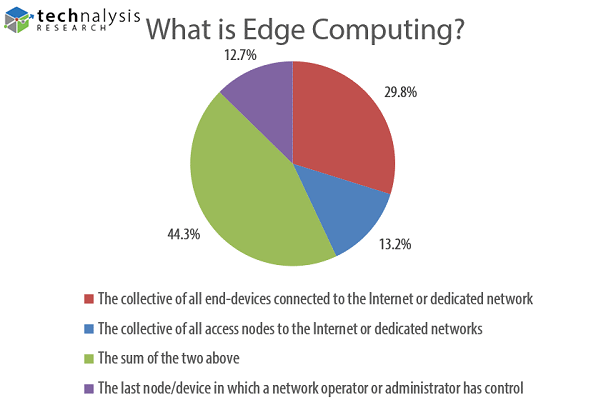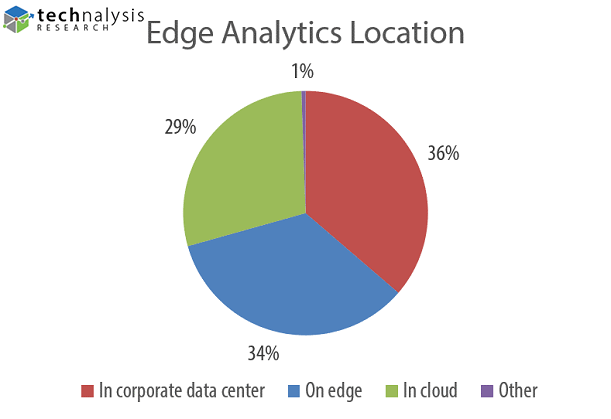Observing major computing trends is always an interesting exercise, but as core technologies mature and become more complex, that task can be very challenging. Such is the case with edge computing, a hot new area that---though primarily associated with business and even industrial computing---is a key enabler for both consumer and enterprise applications.
As I've discussed in the past, edge computing essentially takes hardware and/or software elements that have traditionally lived in the cloud or private corporate data centers, and brings them out to the "edge" of the network. In other words, it brings computing hardware and applications within physical proximity of where the action is---whether that action is monitoring the production line in a factory, tracking real-time traffic conditions in an autonomous vehicle, or speeding up the performance of an application that's highly sensitive to variations in network bandwidth.
To make better sense of the evolution of edge computing, TECHnalysis Research engaged in an online survey of 600 US business professionals who are involved in their company's edge computing efforts. The results of the survey were combined into a report---a summary version of which is available as a free download here---that highlights a number of key attributes about the fascinating world of edge computing.
The first question of the survey was designed to get a better sense of how people actually define edge computing. Even though the concept has been around for a while, there still isn't solid agreement (nor understanding) on what exactly it is. The top two prevailing schools of thought lean towards either traditional endpoint devices, such as PCs, smartphones, etc., or towards access devices, such as gateways, routers, or even small servers. There is a bit of a bias towards endpoints, but it turns out the largest group of people think it's a combination of the two, which makes the most sense. Figure 1 shows the results.
Fig. 1

Much of the attention around edge computing focuses on the new kinds of capabilities that it can enable because of the more distributed computing environment it demands. While that's certainly justified, one of the more surprising results from the study is that more work on the edge has migrated there from the cloud---either fully or partially. In fact, it's approximately a 60/40 split between migrated cloud apps and apps that are built new for the edge, as Figure 2 illustrates.
Fig. 2

What this means is that companies are in the process of evolving their computing workloads, and are transitioning some of them away from the cloud and towards the edge. Viewed in this light, some current iterations of edge computing could be seen as transitional, with more advanced edge-specific applications and implementations yet to come.
While the range of different applications being run on the edge is enormous, one relatively consistent characteristic for all of them is leveraging analytics capabilities. Most edge applications analyze and take actions on datasets such as the real-time data coming from sensors, or incoming network or device usage data. The goal is to leverage that data to make the processes or applications in their organizations run more efficiently. In fact, improving efficiency is the most popular goal for all edge computing projects, followed by increasing security, and then reducing cost.
Despite the similarity of intent, however, the means and location by which this analytics work is done varies tremendously, emphasizing the still evolving nature of this relatively new computing architecture. As Figure 3 highlights, for example, more edge computing analytics is done in the data center than anywhere else. Doing analytics on the edge and in the cloud is still quite popular, however, and it's likely that, as computing capabilities increase on the edge, we'll see more analytics work migrate there.
Fig. 3

The possibilities for edge computing are enormous, and it's clear that companies are just starting to scratch the surface of its full potential. Part of the reason that progress towards broader and more advanced edge computing efforts is taking a while is that it's also a very complicated topic. In fact, the technical and implementation complexities of edge computing are two of the top barriers cited by survey respondents.
Nevertheless, there are some intriguing possibilities for collaboration both within the tech industry and organizations deploying the technology that edge computing is uniquely positioned to help drive forward. By enabling these new partnerships and technology combinations, edge computing appears destined to be a critical factor in the tech industry for some time to come.
For a free downloadable link to the summarized version of the report, you can click here.
Bob O'Donnell is the founder and chief analyst of TECHnalysis Research, LLC a technology consulting and market research firm. You can follow him on Twitter @bobodtech.
Masthead image credit: Mikaela Shannon via unsplash.
